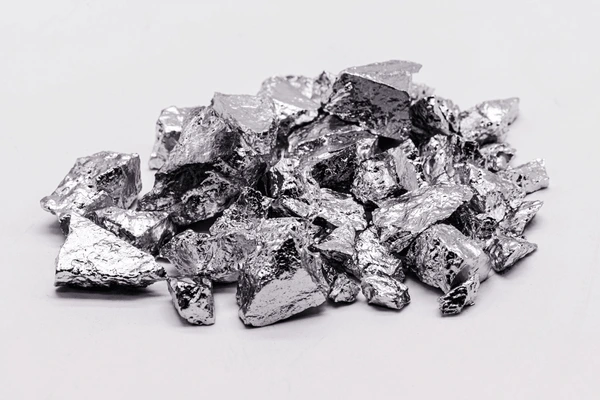Lead: The Versatile Workhorse, with Environmental Concerns
Lead, a bluish-gray metal with a long history, plays a diverse role in our world. From batteries and ammunition to plumbing and radiation shielding, its versatility comes with environmental and health considerations. Let’s explore the intricate world of lead, delving into its sources, applications, and key aspects for international traders and buyers.
Description:
Lead primarily exists in galena ore, a lead sulfide mineral.
Extracting the metal involves a multi-step process, including mining, crushing, milling, and smelting. Lead content in galena ore varies between 3% and 80%, significantly impacting processing costs and yield.
Key Source Countries:
- China: The world’s leading producer, accounting for over 20% of global output. Possesses vast reserves and established mining operations.
- Australia: Second-largest producer, contributing around 15% of global production. Major mines include Cannington and Broken Hill.
- Peru: Holds around 10% of the global market share, with key production regions like Cerro de Pasco.
- Mexico: Significant producer, accounting for approximately 8% of global output. Zacatecas and Chihuahua hold major lead deposits.
- Other notable producers: United States, Bolivia, India, Kazakhstan, and Zambia contribute to the remaining global production.
World Output Volumes:
Global lead production reached approximately 11 million tonnes in 2023, showcasing gradual growth over the past decade. China remains the dominant force, while other major producers strive to expand their operations. Fluctuations in demand and supply dynamics, particularly from China, can cause price volatility.
Major Producers and Market Share:
- Glencore: The world’s largest producer, controlling around 12% of the global market. Operates extensive mines in Australia, Peru, and Kazakhstan.
- MMG Limited: Australian mining giant, holding approximately 8% of the global market share. Focuses on high-grade lead deposits and efficient production processes.
- China Minmetals Corporation: Major Chinese producer, accounting for around 7% of global output.
- Vedanta Resources: Indian company with significant lead production in India and Zambia, controlling around 6% of the global market.
- Other major producers: BHP Billiton, Minsur SA, Boliden AB, Trepca, and numerous smaller players contribute to the remaining market share.
Forms of Trade:
Lead is primarily traded in three forms:
- Lead ingots: Raw, refined lead blocks (over 99.5% lead content) used for further processing into various products.
- Lead alloys: Lead combined with other metals like antimony or tin for enhanced strength, corrosion resistance, or other desired properties. Used in batteries, ammunition, and other applications.
Lead compounds: Lead oxides, sulfates, and carbonates used in pigments, batteries, and various industrial applications.
Price Trends (Past 5 Years):
Lead prices have experienced significant fluctuations over the past five years:
- 2019: Prices hovered around $2,000 per tonne due to balanced supply and demand.
- 2020: Pandemic disruptions caused a decrease to around $1,600 per tonne before recovering moderately.
- 2021: Surging demand for batteries, particularly in China, pushed prices to over $3,000 per tonne.
- 2022: Prices corrected downwards to around $2,500 per tonne due to concerns about slowing global growth and rising energy costs.
- 2023: Prices maintained some volatility, ranging between $2,300 and $2,800 per tonne, influenced by geopolitical tensions and battery demand expectations.
Major Importing Countries:
- China: While being the top producer, China also imports significant volumes of lead (around 10% of its consumption) to meet its growing battery and manufacturing needs.
- United States: Major importer, primarily relying on Mexico and Canada for its lead supply.
- European Union: Collectively a significant importer, driven by demand in the automotive and battery sectors.
- South Korea: Major importer, relying on Australia and Southeast Asian countries for its lead consumption.
- India: Growing domestic demand necessitates substantial lead imports, mainly from Australia and the Middle East.
Major Exporting Countries:
- Australia: Significant exporter, accounting for approximately 20% of global lead exports.
- Peru: Major exporter, contributing around 15% of global lead trade.
- Mexico: Exports around 10% of its lead production, playing a key role in North American supply chains.
- Bolivia: Notable exporter, contributing around 8% of global lead trade.
- **Other notable exporters
Considerations for International Traders and Buyers of Lead:
Navigating the lead market requires careful consideration of various factors due to its versatility, environmental concerns, and fluctuating demand. Here are some key points for international traders and buyers:
Environmental Regulations:
- Stringent regulations on lead use and disposal in many countries can impact demand and prices.
- Responsible sourcing certifications and adherence to ethical mining practices are becoming increasingly important for buyers.
- Lead recycling opportunities might offer cost-effective and environmentally friendly alternatives.
Fluctuating Demand:
- Battery production, particularly in China, is a major driver of lead demand, influencing price volatility.
- Construction, ammunition, and other applications also contribute to demand fluctuations.
- Stay informed about industry trends and potential disruptions to anticipate future demand shifts.
Supply Chain Risks:
- Geopolitical tensions in major producing countries can disrupt supply chains and lead to price spikes.
- Infrastructure limitations in some regions can hinder efficient lead transportation and export.
- Monitor potential supply chain disruptions and diversify sourcing options to mitigate risks.
Quality Variations:
- Lead content and presence of impurities like arsenic and antimony can significantly impact the metal’s suitability for various applications.
- Clearly define quality specifications and conduct thorough inspections to ensure lead meets your specific needs.
Price Volatility:
- Lead prices have historically exhibited significant fluctuations, requiring effective risk management strategies.
- Utilize hedging instruments like options and futures contracts to mitigate potential losses.
- Diversify your portfolio and consider alternative metals with similar properties to manage price volatility.











